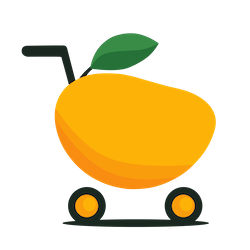
Me think this post is different from others in 2 ways (obviously I’m biased):
1/ I use layman’s terms to explain so any noob can easily understand
2/ I provide an example for every term
Without wasting any more of your precious time, let’s go.
3 Must-know terms you won’t find anywhere else
S(E)CTS selling

This is pronounced as (you know how: “s” and then “e” and then “x”). It’s for folks who want to sell without looking like selling.
- S: Story
- (E): (E)xample (in parenthesis because E is optional)
- C: Crux
- T: Transition
- S: Sell
→ Start with a simple, everyday story (S).
→ Next, provide an example related to the story (E).
→ Then give a useful takeaway/crux (C) — something readers can learn from.
→ After that, write a 1-2 sentences to smoothly transition (T) to the sales.
→ Finally, sell your shyt (S).
Example:
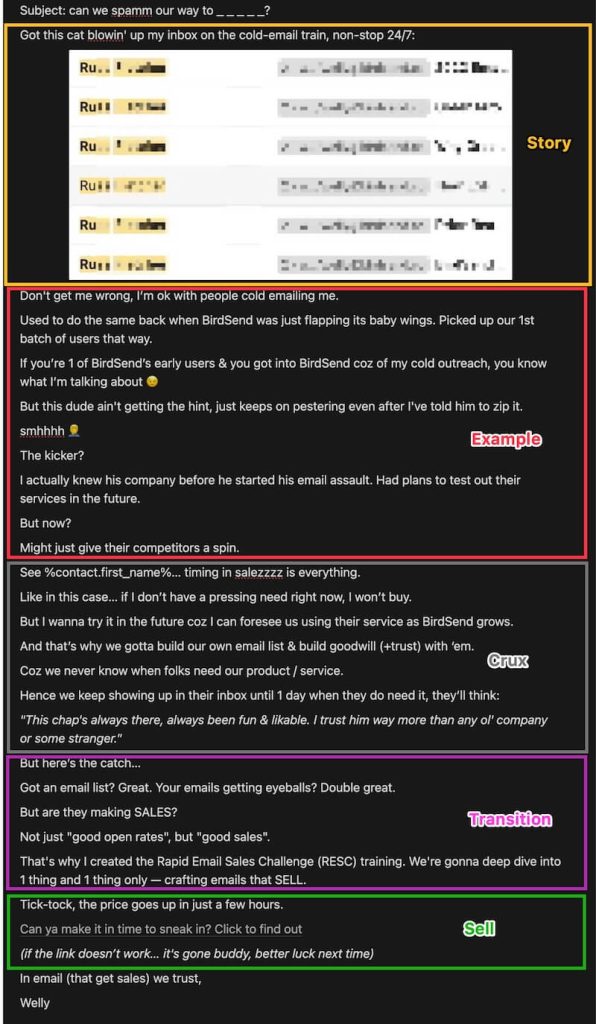
Click here if you want to discover more about this S(E)CTS invisible selling formula.
In-your-face / obnoxious / hard-selling
Pretty self-explanatory.
Example:
You’re taking a stroll in the mall enjoying your own sweet time…
When suddenly a buff guy jumped out of nowhere stopping us in our tracks… screaming, “Get a year-long personal training from me, a protein shake subscription, and pro gym gear! You wanna be the best version of yourself, aye!?”

Humor marketing
This is about using humor in your messaging to make folks chuckle. When they laugh, you break the ice and lower their “defensive wall”.
You don’t have to be comedian or even being a tad funny in real life to pull this off. Online, we have an advantage. Even introverts can inject light doses of humor in their content.
Example:
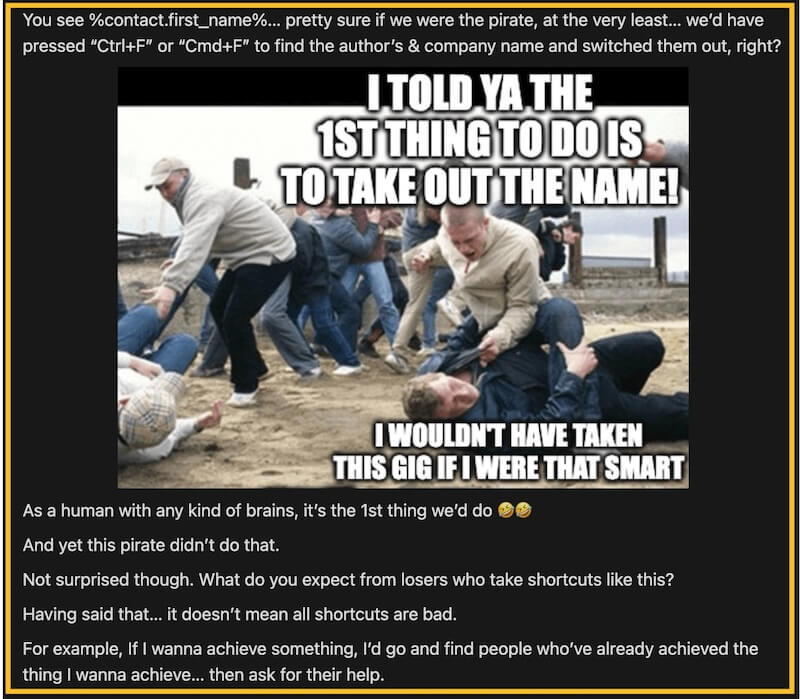
13 Basic marketing terms
Traffic
How many humans visit your website, similar to how many people walk into a restaurant for an offline business. Notice I said “humans”, not robots.
E.g. If 1,000 people visit your website on Monday, that’s your traffic for that day.
Landing page
The web page someone lands on after they click a link (link inside emails, link from social media, link from ads, etc.).
E.g. Taylor clicks an email link → is taken to web page titled “What are digital products”. This page is the landing page.
Sales page
A landing page doesn’t have to be a sales page, but it can be.
A sales page is a web page that contains detailed information on the product/service being offered to potential customers… including features, benefits, testimonials, pricing, etc.
E.g. This “outta Gmail’s Promo Tab case study” is a landing page and also a sales page since I’m also laying out the features, benefits, and testimonials of my service.
Marketing automation
Using software/tools to automate certain parts of your marketing.
E.g. 1/ Email marketing automation to automate the sending of emails to subscribers
E.g. 2/ AI chatbot automation to automatically answer common questions on your site 24/7…. freeing up you and your support team’s time + energy
Marketing funnel
Different stages in a customer’s journey where you try to engage + attract prospects through different awareness and consideration stages.
E.g. Posting on social media to attract visitors to your site…
→ Then offering a free ebook to get their email address.
→ And finally nurturing them via emails to buy your offer.
Sales funnel
The sales funnel starts after a lead has gone through the marketing funnel. The sales funnel focuses on converting leads to customers via interactions, follow-ups, and negotiation.
E.g. You do a product demo to folks who downloaded your ebook, follow up with them via email and phone, and finally close the deal.
Social proof
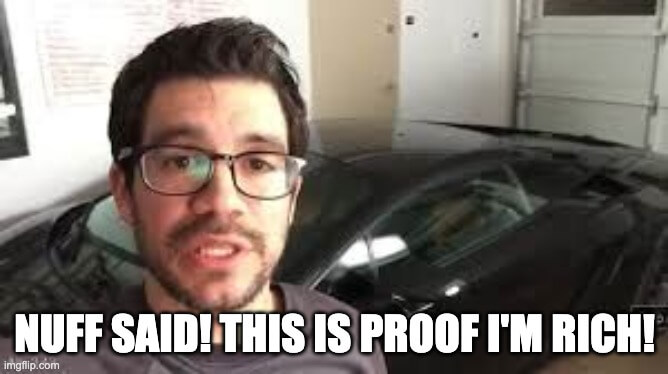
Proof that other people have successfully used your products/services and have gotten good results.
E.g. Say you’re a swimming coach. On your sales page, you post videos of clients swimming before and after they’ve taken your swimming lessons.
Target audience
The ideal customers/clients for your offers.
E.g. If you sell electric vehicles, your target audience is those who are conscious about the environment and open to embracing new technologies.
Lead generation
Marketing activities with the goal of generating leads for the business.
E.g. Website visitors are presented with an opt-in form to get your “Speak on stage like a pro in 30 days” ebook.
Customer retention
Retaining customers/clients is about making them come back and do business with you, instead of losing them to competitors.
E.g. You offer a loyalty card where customers get a free drink after 10 purchases, encouraging them to come back to you instead of trying other cafes.
Customer satisfaction
Making sure customers are happy and satisfied their purchase. So that they spread the word about you and keep coming back.
E.g. You send a survey after customers buy your product, asking for their thoughts and constructive feedback. If there’s any issue, you address them so that customers have a positive experience and want to recommend you to others.
Niche marketing
Focusing on a specific segment of the population (that has specific needs and wants) instead of appealing to everyone.
E.g. Walmart is for everyone and anyone. My business focuses on serving course creators, coaches, experts, and consultants.
Affiliate marketing
Marketing other people’s products/services in exchange for a commission. Here’s some statistics on affiliate marketing if you want to explore further.
E.g. You’re a fitness coach. You promote brand X’s protein powder on social media with a discount code. When your followers buy, you get a commission.
6 Social media marketing terminologies
Social media platforms
The different online hangouts where people share what they’re up to and socialize with one another. Today, it’s not just about socializing, but doing business too.
E.g. You can publish a social media post on Facebook, Instagram, X (formerly Twitter), LinkedIn, TikTok.
Influencer marketing

Using famous internet people / internet celebrities with a decent-sized following to promote your offers. You usually compensate them by paying or giving them your offer/merchandise.
E.g. A fitness brand partnering with a popular Instagram fitness model (with 100k followers) to promote their new line of workout gear in the influencer’s posts & stories.
Engagement rate
How often people engage with your posts by liking, commenting, and sharing them?
Formula to calculate engagement rate =
(Number of likes + comments + shares) ÷ Number of followers x 100
E.g. Your post receives 10 likes, 5 comments, and 1 share. Your follower count is 1,000. Hence engagement rate = (10+5+1) ÷ 1000 x 100 = 1.6%
Impressions
How many times your post shows up, regardless if the same people saw it again.
E.g. 300 impressions for your post means it has been shown 300 times. It doesn’t necessarily mean 300 different people saw it (because some folks might have seen it multiple times).
Reach
How many UNIQUE people saw your post.
E.g. If your post’s reach is 250, it means 250 different folks saw it.
Hashtags
The # you add to posts to indicate the type of content the post is about. People can discover your topic by searching for: #[your keyword]
E.g. #emailmarketing #digitalmarketing
6 Digital content marketing terms
Evergreen content
Content that stands the test of time. Content that’s always relevant (not a fad) — like a trusty compass that never loses its way.

E.g. A video on how to swim freestyle.
Inbound marketing / pull marketing
This is like “creating demand”.
The lead voluntarily reaches out to inquire more about your products/services.
E.g. Creating useful content for your target audience to hook them in → They’re interested in what you do and offer → They contact you.
Outbound marketing / outreach / push marketing
This is like “door-to-door knocking”.
Your unsolicited approach is frowned upon. Your presence is unwanted.
E.g. A sales agent cold calling a list of 1,000 people, only to be scolded by many.
Viral content
Content that spreads like wildfire on the internet, with everyone engrossed in it and sharing it like crazy.
E.g.
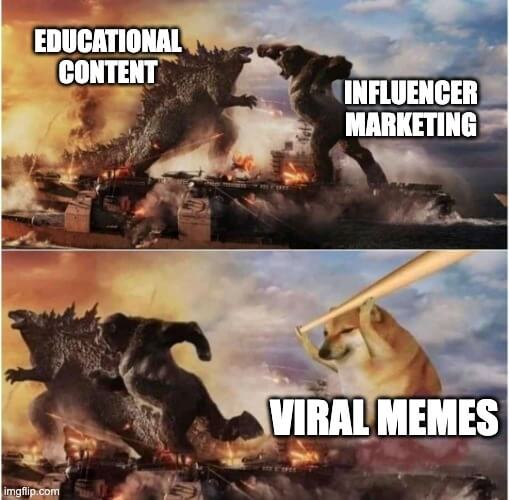
User-generated content
Your customers, leads, fans, and audience are the ones creating the content for you, instead of you creating the content yourself.
E.g. A travel website running a contest where travelers submit their personal stories and photos from trips, with the best entries receiving hotel vouchers.
Call to action (CTA)
The part where you tell people to buy your stuff.
E.g. Click here to grab this course and start speaking like a pro.
19 SEO (Search Engine Optimization) terms
Seo fundamentals
Search engines
Where people go to search for information or things they’re looking for.
E.g. Google, Bing, DuckDuckGo (privacy-focused).
SEO (Search Engine Optimization)
The process of optimizing a web page for a certain keyword so it ranks on the first page of Google for that keyword. Some folks call this “organic performance”.
E.g. This article you’re reading is trying to rank for “digital marketing terms” for organic search.
Organic traffic
Traffic/visitors you get on your website without paying.
E.g. Organic traffic from Google, Bing, and social media.
Keywords and content
Keywords
The text people type into Google to search for something (a.k.a. search terms).
E.g. John is obsessed with a pirate named Jack. So he goes to Google and types “jack the pirate”.

Short-tail keywords
Also known as “broad terms”, these are usually 1-3 word keywords that cover a broad topic. They’re harder to rank because of stiff competition.
E.g. Finance, health tips, business strategy.
Long-tail keywords
These are longer and more specific keywords (compared to short-tail). They’re higher quality because the search intent is more refined. They’re also easier to rank.
E.g. Abandoned cart email templates, what are digital products.
Keyword density
How often the targeted keyword is used in the content.
E.g. If you target the keyword “digital marketing strategy” and you use it 10 times in a 1,000-word content, the keyword density is: 10 ÷ 1,000 x 100 = 1%
Keyword stuffing

The excessive repetition of keywords in the content. Your site can be penalized for this.
E.g. If you target the keyword “digital marketing strategy” and you use it 100 times in a 1,000-word content, you’re keyword stuffing (keyword density = 100 ÷ 1,000 x 100 = 10%).
Technical SEO
Crawler/bot
These are scripts/bots search engines use to browse your web page, read its content, follow links, and index the info they find.
This indexed information helps search engines understand what each page is about, which is key for ranking web pages in search results.
E.g. Google’s bots visit your newly published blog post, scans its content, links, and structure to understand what it’s about and where to place it in search results.
On-page optimization
This involves improving your web page content and structure to improve search engine rankings. It includes optimizing the page’s meta description, header tags (H1, H2, H3), image optimization, internal linking between pages, URL structure, and mobile view support.
E.g. For the article “Best email marketing tools for creators”, you add relevant keywords throughout the content and optimize the title tag to “Best email marketing tools for creators — #3 will shock you”. You also include relevant alt-text for your images.
Off-page optimization
Things you do “outside” of your page to optimize your web page ranking in Google.
E.g. You guest post for other blogs in your niche to get backlinks from the posts to your site.
Authority & links
DA (Domain Authority) or DR (Domain Rating)
The overall strength of a website’s backlink profile on a scale of a 0 to 100, based on the quality and quantity of its backlinks. The higher the number, the better.
E.g. A well-established news site like The New York Times might have a DA of 90+, while a small, local blog about swimming might have a DA of 10+.
Inbound links/backlinks
When you’re doing link building and other websites link to your website, it’s called gaining “inbound links”. This is like a “vote of confidence” that your website is good for its topical category.
E.g. If a popular online marketing site recommends CartMango (this site) to their audience and links to us, we get an inbound link.
Internal links
These are internal links from one web page to another web page within the same website.
E.g. This article you’re reading has internal links that point to the homepage and other pages of the website (CartMango).
External links
These are links that go to other websites you don’t own.
E.g. If you write a piece of content on marketing automation platforms and you link over to the various marketing platforms, these links are called external links.
Reciprocal links
This is when 2 or more websites engage in “link trading” with the “I’ll link to you and you link to me” mentality.

Search engines frown upon reciprocal links and will penalize sites that do this.
E.g. A fitness site and a gaming site link to each other for the sole purpose of gaining backlinks.
User experience and behavior
SERP (Search Engine Results Page)
The “results” page search engines show someone after they type in their keyword.
E.g. Alex types “how to become a creative writer”. The SERP shows a list of websites related to this query.
Bounce rate
This is the number of visitors who land on your page and then exit without clicking anything. The lower the number, the better. A high bounce rate could mean your page isn’t engaging or relevant enough for visitors.
E.g. If 100 visitors land on your page and 70 of them leave without clicking on any other pages, your bounce rate = 70 ÷ 100 x 100 = 70%
Time on page
The time a visitor spends on your web page. The longer the better — it means they’re enjoying their stay and consuming your content.
E.g. If your blog post has an average time on page of 2 minutes, it suggests folks find your content valuable enough to read through it, rather than quickly skimming and leaving.
16 Email marketing terms
We can’t be talking about digital marketing campaigns without discussing email marketing.
Open rate
Formula:
The number of subscribers opening your email ÷ number of recipients x 100.
The higher the number, the more engaged your subscribers.
E.g. 2,000 email opens from an email list of 10,000 recipients = 2,000 ÷ 10,000 x 100 = 20% open rate.
Click rate
Formula:
The number of subscribers clicking the link in your email ÷ number of recipients x 100. The higher the number, the more engaged your subscribers are.
E.g. 500 clicks from a list of 10,000 recipients = 500 ÷ 10,000 x 100 = 5% click rate.
Click-to-open rate (CTOR)
Formula:
The number of subscribers clicking the link in your email ÷ number of email opens x 100.
The higher the number, the more engaged your subscribers are.
E.g. If:
- of recipients = 10,000
- of openers = 2,000
- of clicks = 500
Then click-to-open rate = 500 ÷ 2,000 x 100 = 25%.
Email automation / drip campaigns / sequences
This is a series of automated emails sent to subscribers over time or based on their behavior.
You write the emails once, set up the emails once in your email service provider, and let automation do the heavy-lifting for you 24/7/365, regardless if you’re working or not.
Humans need to rest. Automation (tech) doesn’t — it’ll happily work for you every second with no complaints.
Here’s one of my email automations:

Lead magnet
A useful resource you give (for free) to your target audience that can partially solve their problems.
To get this free resource, they’d have to give you their email address.
E.g. My Online Selling Mistakes Challenge:
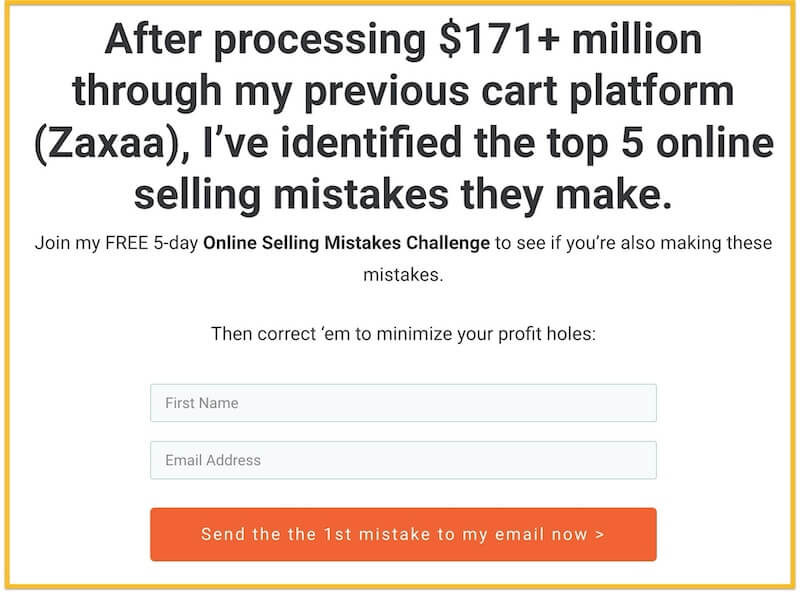
Folks who join the challenge want to improve their online selling game to increase their sales.
Newsletter
A weekly / bi-weekly / monthly email you send to subscribers containing useful information related to your niche/business.
E.g. A monthly newsletter on “how to live a healthy vegan life”.
Mailbox/inbox providers
These are where people go to check their emails.
E.g. Gmail, Yahoo, and Outlook are the most popular mailbox providers.
Spam folder
If mailbox providers think that your email is junk, unwanted, or unsolicited, they’ll send it to the spam folder.
And since nobody checks there, your email won’t be read.
E.g. Say Ken sends a promotional email about his new offer to 1,000 subscribers, but 200 of those emails end up in recipients’ spam folders. That’s 200 people who won’t see his email, ever.
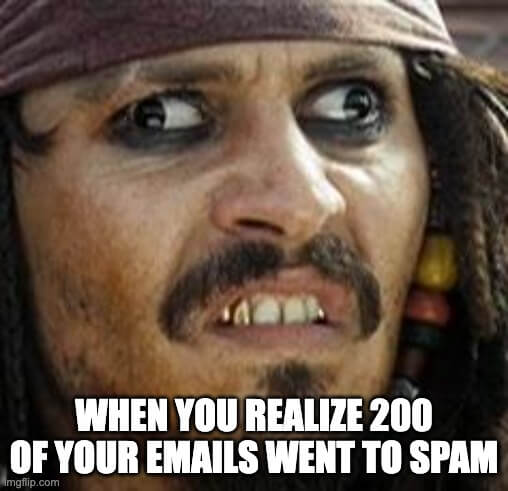
Note: Here’s how to reduce emails going to spam.
Email Service Provider (ESP)
This the email marketing tool/software you use to send permission-based emails to your subscribers.
E.g. I want to send an email to my subscribers. I simply log in to my email service provider (BirdSend — also developed by me & my small team) and send from there.
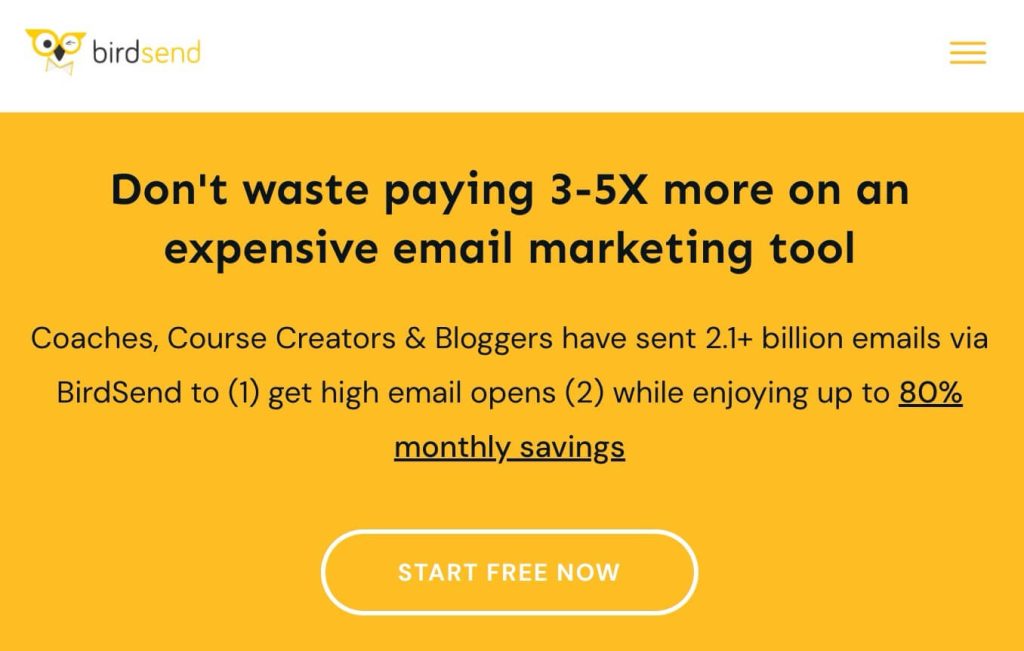
Gmail’s Promotions Tab
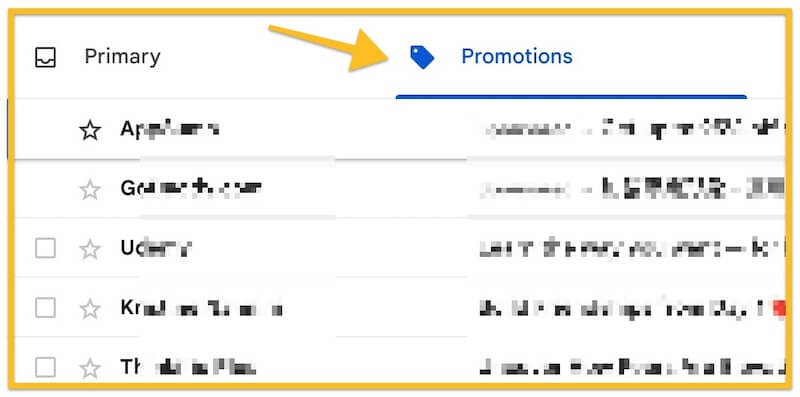
If Gmail deems your email campaigns as promotional in nature, it’ll put your marketing emails into this Promotions Tab. This is bad because very few people check there.
Some people even call Gmail’s Promotions Tab a “glorified spam folder”.
E.g. If you send an email to 1,000 subscribers and 700 of them land in the Promotions Tab… as the saying goes… you’re leaving a lot of “money on the table”. Because if you can fix this (Promotions Tab issue is less severe than Spam issue), you’d recover a ton of sales opportunities.
Note: Here’s how to solve Gmail’s Promotions Tab problems

Gmail’s Primary Tab

Emails that don’t belong to the Spam folder or Promotions Tab go here. These are emails that Gmail thinks are the most relevant and important for you.
When checking their inbox, this Primary Tab is where most people will go to read their emails.
SMTP (Simple Mail Transfer Protocol)
This is the tech that sends your emails. It handles the sending of emails from one server to another.
E.g. SendGrid, Mailgun, Mailjet.
Anti-spam organizations
These are organizations whose goal is to fight unwanted junk emails.
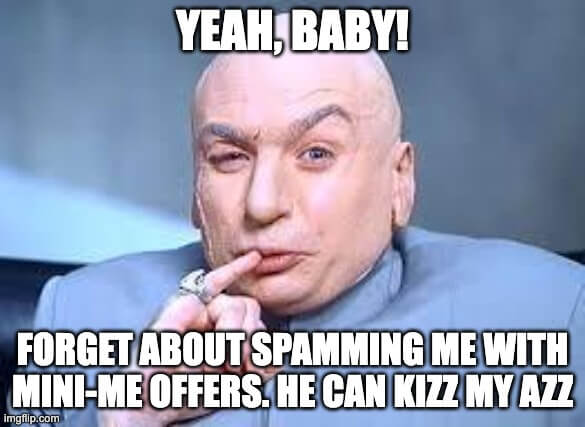
The most notable anti-spam organization is Spamhaus.
If your sending domain (the domain where you send emails from — e.g. domain.com) is blacklisted, chances are your emails will land in the Spam folder.
E.g. Spamhaus, Barracuda, Proofpoint
SPF (Sender Policy Framework)
This isn’t just a digital marketing buzzword. When sending emails, SPF makes sure you are who you say you are. It’s like an identity card for emails.
E.g. When I send an email from cartmango.com, the recipients’ mail servers check for SPF — whether the email is actually coming from an authorized server from cartmango.com. This prevents spammers from impersonating my email address.
DKIM (Domain Keys Identified Mail)
This is to make sure the email messages have not been tampered with during transit from the sender to the recipient.
E.g. When I send an email, DKIM adds a digital signature to it. When it arrives in subscribers’ inboxes, their email servers can verify this signature to ensure the email content hasn’t been altered in transit, confirming the email’s authenticity.
DMARC (Domain-based Message Authentication, Reporting, and Conformance)
This is another layer of “tech” you install into your domain server to tell mailbox providers what to do with emails that fail SPF and/or DKIM checks.
Do you want to put them into the Spam folder or not?
E.g. I set up a DMARC policy for my domain (cartmango.com) to instruct receiving email servers to reject any emails that fail both SPF & DKIM checks. So if a scammer pretending to be me sends an email to you, your email server will automatically reject it.
To put it simply — SPF, DKIM, and DMARC work together to “be like a passport”. My server creates the passport (SPF, DKIM, DMARC). The receiving country’s immigration officer (receiving email server) checks them for validity.
10 Digital advertising terms
SEM (Search Engine Marketing)
Paying for your ad/web page to show up in Google’s search results for certain keywords, instead of organically ranking for them.
E.g. A local pizza shop pays to display their Google ads at the top of search results when people type “best pizza near me”.
PPC (Pay Per Click)
An online advertising payment model where you only pay when people click on your ad. PPC is one of the most popular models among advertising networks.
E.g. Using the same pizza example, the pizza shop only pays Google when someone clicks on their ad.
CPC (Cost Per Click)
How much it costs when a person clicks on your ad.
E.g. Still using the same pizza example, the pizza shop pays $0.50 for every click on their ad.
CPM (Cost Per Mille or Cost Per Thousand Impressions)
Another online advertising payment model where you pay based on how many views on your ad. CPM is how much it costs per 1000 views on your ad. Note that one person could view your ad multiple times. Here is Google’s definition of CPM.
E.g. The pizza shop pays $10 for every 1000 views.
CPA (Cost Per Acquisition)
How much it costs to acquire a new lead or customer, depending on the objective of your ad campaign.
E.g. The pizza shop pays $20 for every new order.

Display ad impressions
How many times your Google ad or other ad shows up on people’s screens. Impressions can be thought of as “views”. Note that one person could view your ad multiple times.
E.g. The impressions for the pizza shop’s ad are 1,000. This means it has been shown 1,000 times.
Quality score
The ad platform’s rating of how relevant your ads are to the folks you’re advertising to. The lower the quality score, the more you pay, and vice versa.
E.g. If the pizza shop advertises a weight loss program, the quality score will be low.
CTR (Click-through rate)
Out of the folks who see your ad, how many click on it. The higher the CTR, the better.
Formula: No. of clicks ÷ No. of impressions x 100.
E.g.
- of clicks = 100
- of impressions = 10,000
- CTR = 100 ÷ 10,000 x 100 = 1%
Remarketing/retargeting
This is another type of display advertising.
It’s about showing ads to people who’ve visited your site. This is like a friendly reminder like “Hey we’ve met before, remember me?”

E.g. The pizza shop remarkets to people who’ve visited their site with the message “We saw you eyeing our pepperoni paradise! Come back for a slice of heaven (and maybe some garlic & bread too)!”
ROAS (Return On Ad Spend)
How much money you make compared to what you spend. The higher the ROAS, the better.
Formula: Revenue from ad ÷ Ad spend x 100.
E.g.
- Revenue = $10,000
- Ad spend = $5,000
- ROAS = 10,000/5,000 x 100 = 200%
6 Ecommerce / Online selling terms
Abandoned cart
The user behavior in this case goes like this:
A user/lead goes to your checkout page, fills n their information, and is about to buy but changed their mind and “abandoned” their purchase intent.
Abandoned cart rate is the percentage of users who added items to their cart but didn’t complete their order.
E.g. Simon went to your checkout page and was about to buy your “10k YouTube Subs Accelerator” course. Just as he was about to fill in his credit card details, his 5-year-old son came into his room demanding ice cream. After buying ice cream, he totally forgot about the course.
Upselling
Persuading a customer to buy a fancier or more expensive version of what they bought.
E.g. They bought a pack of chicken nuggets, you upsell them the 3-pack for the price of 2 packs.
Downselling
Persuading a customer to buy a “toned-down” version of the offer they just declined. The idea is you still get some sales, albeit earning less revenue.
E.g. They decline your done-for-you tax service, you downsell them to your hourly consulting.
Cross-selling
Offering related products/services to the offer they bought.
E.g. If they buy a mobile phone, offer an extended warranty.
If you run out of cross-selling ideas for your online courses, here’s a list of 200 ideas you can potentially use.
AOV (Average Order Value)
The average amount of money a customer spends when they buy from you in a single transaction.
E.g. You run a pet accessories shop and the AOV is $50 per visit. Some folks just buy a bag of food for $30, while others grab toys and treats for their pet, spending $70 or more.
Order bump
A relevant, small, extra item you offer on the checkout page to increase your revenue.
E.g. Your online course “How to speak on stage like a pro” is the main offer. Your order bump could be an ebook on “10 humorous opening lines that make your audience connect with you”.
15 Analytics & metrics
KPIs (Key Performance Indicators)
These are important indicators that tell you if you’re hitting key business objectives or not.
E.g. KPI for Year-on-Year sales growth, KPI for Customer Acquisition Cost, etc.
ROI (Return On Investment)
How much money you make compared to what you spend.
The formula to calculate this is: (Revenue – Cost) ÷ Cost x 100
E.g. If your revenue is $3,000 and cost is $2,000, the ROI is ($3,000-$2,000) ÷ $2,000 x 100 = 50%
For a more detailed explanation of ROI, see Investopedia’s article.
LTV (Lifetime Value)
How much a customer or client is worth to you over the lifetime of your business. The higher the number, the better.
Formula = Average order value x Purchase frequency per year x Customer lifespan
E.g. John spends $1,000 each time he visits your store (average order value). He bought 4 times a year. And he continues to buy from you for 10 years. LTV = $1,000 x 4 x 10 = $40,000
Conversion rate
The percentage of web visitors who took action on what you want them to do.
The “what you want them to do” can be:
- Sales conversion rate
- Lead conversion rate
- Or something else
Formula = (# of conversions ÷ # of visitors) x 100
E.g. Daisy got 10 customers from 1,000 visitors. Her conversion rate = (10 ÷ 1,000) x 100 = 1%
A/B test
This is a test/experiment you run with 2 versions of something to see which performs better for the criteria you’re testing.
E.g.
- A/B testing email subject lines
- Landing page headlines
- Checkout process (1-page checkout vs multi-step process)
Multivariate test
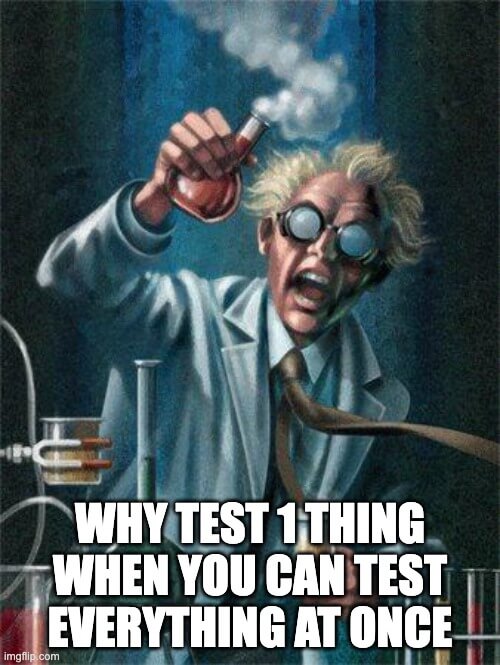
This is an advanced version of an A/B test where you test multiple variables at once (instead of only one at a time).
E.g. Instead of only testing email subject lines, you also simultaneously test when is the best time to send emails to subscribers.
Churn rate
How fast you’re losing customers. Or put it another way — the percentage of customers who stop buying from you over a specific time frame.
The formula to calculate is: (# of customers lost ÷ total number of customers at the start of the period) x 100.
E.g. You had 1,000 customers at the beginning of the month and lost 10 customers by the end of the month. Churn rate = (10 ÷ 1,000) x 100 = 1%
Attribution modelling
This is about figuring out which marketing campaigns or online channels lead to conversions and sales.
E.g. A potential customer first clicks on your Facebook ad. Then he searches for your brand on Google. Finally, he makes a purchase after receiving an email from you.
Last-touch attribution
This attributes the sale to the “last interaction”.
E.g. Using the same example from above, it’d be email.
First-touch attribution
This attributes the sales to the “first interaction”.
E.g. Using the same example from above, it’d be Facebook.
Linear attribution
This distributes credit equally across all touchpoints.
E.g. Using the same example from above, Facebook, Google, and email would all get equal credit for the sale.
Time decay
This gives more weight to recent interactions.
E.g. Still using the same example, email would get the most credit, followed by Google, and then Facebook.
Position-based (U-shaped)
This gives 40% to the first touchpoint, and 40% for the last touchpoint, with the remaining 20% distributed equally among the middle touchpoints.
Using the same example:
- Facebook = 40%
- Google = 20%
- Email = 40%
MRR (Monthly Recurring Revenue)
The predictable income you get from customers paying you automatically on a monthly basis.
E.g. You have 100 customer paying you $50 monthly. Your MRR = 100 x $50 = $5,000.

ARR (Annual Recurring Revenue)
Like MRR, but you count it on a yearly basis.
E.g. Using the same example from MRR, your ARR = $5,000 x 12 = $60,000
7 Other digital marketing terminology
Ramen profitability
Not really a digital marketing term, but I’ll add it here anyway because most of my audience are solopreneurs or those with a small team.
It’s super tough to bootstrap a business to make it successful. “Ramen profitability” is an informal term to describe a business that’s barely profitable, making just enough money to cover the founder’s living expenses (or to eat ramen — so they say).

E.g. Back when I first started, my biz partner and I ran a website design service. After a couple of years, the business was barely profitable — yes we could eat ramen… but that’s about it. We eventually closed up shop as we got sick of ramen, lol.
SaaS (Software as a Service)
Instead of paying a one-time fee upfront to “own” the software, you pay for it on a monthly or yearly basis to “rent” it.
E.g. CartMango checkout software, BirdSend email marketing tool, Canva.
API (Application Programming Interface)
This allows apps to “communicate” with one another so that the end user can achieve what they want.
E.g. After someone buys your offer (handled by CartMango), use Zapier to add the customer’s info into Google Sheets.
This means CartMango “talks” to Zapier, who then “talks” to Google Sheets. The “talking” is possible via API.
VSL (Video Sales Letter)
A recorded video that tries to sell you something. It’s like a sales page presented in video format. This is also known as video marketing.
E.g. You land on a sales page with a prominent video that explains the benefits of public speaking. The goal of the video is to convince you to buy their “speak on stage like a pro” coaching program. If many folks “bite”, it means the video marketing is a success.
Webinar marketing
Using LIVE video presentations to educate people about a topic. At the end of the online seminar, a sales pitch relevant to the topic is made.
E.g. You attended a live online seminar / webinar on public speaking. The presenter gave you 5 tips on “how to outline your speech for maximum impact”. At the end of the webinar, he sells his “speak on stage like a pro” coaching program.
AI (Artificial Intelligence)
Super smart robots/computers that can think, learn, and adapt like humans… but way faster and with more information.
E.g. A chatbot that understands and responds to customer service inquiries in multiple languages, learning from each interaction to improve its responses over time.
Creator economy
An “ecosystem” where content creators like YouTubers, bloggers, podcasters, and digital product creators can monetize their expertise and audience.
E.g. #1:
I run CartMango checkout software & also BirdSend email marketing tool — I can be considered a creator since both are digital products.
E.g. #2:
A personal finance expert who helps regular people achieve financial freedom — he can be considered a creator because he uses his financial skills to help other people while making a living for himself.
Bonus
Flexing
The obnoxious, gross behavior of wannabe celebrities who boast how rich they are and how awesome their lives are… when in reality they’re lamer than an ordinary Joe or Jane — who pose in front of a rented Lambo, wearing knock-off designer clothes, and living in their mom’s basement while trying to convince everyone that they’re “crushing it”.

How obnoxious can it be? As obnoxious as how Jason Leong describes it:
Recap
So there you have it. The 100 + 1 = 101 digital marketing terms that’ll make you a know-it-all 🙂
For quick and easy access to these terms so you can come back any time, I suggest bookmarking this page.
